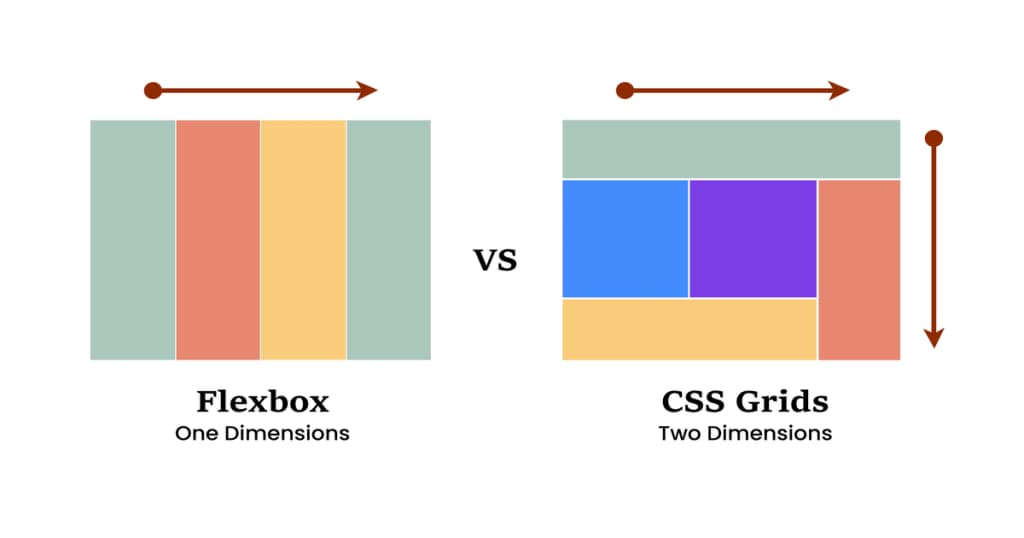Search Engine Optimization (SEO) Starter Guide

 Written by Massa Medi| January 10, 2025
Written by Massa Medi| January 10, 2025
In the digital age, having a strong online presence is crucial for businesses and individuals alike. Two key elements that can significantly boost your visibility and engagement are Search Engine Optimization (SEO) and Content Marketing. This comprehensive guide will delve into the intricacies of both, providing you with actionable strategies to improve your online presence and attract your target audience.
1. Understanding SEO
Search Engine Optimization (SEO) is the practice of optimizing your website to increase its visibility for relevant searches. The better visibility your pages have in search results, the more likely you are to garner attention and attract prospective and existing customers to your business.
How Search Engines Work
Search engines use complex algorithms to determine which pages to show for any given search query. These algorithms take hundreds of factors into account, known as "ranking factors." While the exact algorithms are kept secret, we do know many of the factors they consider:
- Relevance of page content to the search query
- Quality and quantity of inbound links
- Website loading speed and mobile-friendliness
- User experience signals (e.g., time on site, bounce rate)
- Content freshness and regularity of updates
2. On-Page SEO Techniques
On-page SEO refers to the practice of optimizing individual web pages to rank higher and earn more relevant traffic in search engines. Here are some key on-page SEO techniques:
2.1 Keyword Optimization
Research and use relevant keywords in your content, including in:
- Page titles
- Headers (H1, H2, H3, etc.)
- First paragraph of content
- Throughout the body content (but avoid keyword stuffing)
- Image alt text
- URL structure
2.2 Content Quality
Create high-quality, original content that provides value to your audience. Google's algorithms increasingly favor in-depth, authoritative content.
2.3 Meta Descriptions
Write compelling meta descriptions for each page. While not a direct ranking factor, good meta descriptions can improve click-through rates from search results.
2.4 Internal Linking
Use internal links to connect related content on your site, helping both users and search engines navigate your content.
3. Off-Page SEO Strategies
Off-page SEO refers to actions taken outside of your website to impact your rankings within search engine results pages (SERPs).
3.1 Link Building
Earning high-quality backlinks from reputable websites is crucial for SEO. Strategies include:
- Creating shareable, link-worthy content
- Guest blogging on relevant sites
- Engaging in industry forums and discussions
- Leveraging social media to promote content
3.2 Social Signals
While the direct impact on rankings is debated, social media can increase your content's visibility and drive traffic to your site.
3.3 Brand Mentions
Even unlinked mentions of your brand can contribute to your online authority and indirectly benefit your SEO.
4. Technical SEO Essentials
Technical SEO ensures that search engines can crawl, interpret, and index your website effectively.
4.1 Site Speed
Optimize your website's loading speed through techniques like:
- Image compression
- Minifying CSS, JavaScript, and HTML
- Leveraging browser caching
- Using a Content Delivery Network (CDN)
4.2 Mobile-Friendliness
Ensure your website is responsive and provides a good user experience on all devices.
4.3 XML Sitemaps
Create and submit XML sitemaps to search engines to help them discover and understand your site structure.
4.4 Structured Data
Implement schema markup to help search engines understand your content better and potentially enhance your search listings with rich snippets.
5. Content Marketing Fundamentals
Content marketing is a strategic marketing approach focused on creating and distributing valuable, relevant, and consistent content to attract and retain a clearly defined audience — and, ultimately, to drive profitable customer action.
5.1 Understanding Your Audience
Develop detailed buyer personas to understand your target audience's needs, preferences, and pain points.
5.2 Content Types
Diversify your content to cater to different audience preferences:
- Blog posts
- Ebooks and whitepapers
- Infographics
- Videos
- Podcasts
- Case studies
5.3 Content Goals
Align your content with specific marketing goals, such as:
- Brand awareness
- Lead generation
- Customer retention
- Thought leadership
6. Developing a Content Strategy
A well-planned content strategy ensures that your content marketing efforts are focused and effective.
6.1 Content Audit
Assess your existing content to identify gaps and opportunities.
6.2 Content Calendar
Create a content calendar to plan and schedule your content creation and distribution.
6.3 Topic Clusters
Organize your content into topic clusters, with pillar pages covering broad topics and cluster content addressing specific aspects of those topics.
7. Content Creation Best Practices
7.1 Quality Over Quantity
Focus on creating high-quality, in-depth content rather than churning out large volumes of superficial content.
7.2 Storytelling
Use storytelling techniques to make your content more engaging and memorable.
7.3 Visual Content
Incorporate relevant images, videos, and infographics to enhance your content and improve engagement.
7.4 User-Generated Content
Encourage and leverage user-generated content to build community and trust.
8. Content Promotion and Distribution
8.1 Social Media
Share your content across relevant social media platforms, tailoring your approach to each platform's unique characteristics.
8.2 Email Marketing
Use email newsletters to distribute content to your subscriber base.
8.3 Influencer Partnerships
Collaborate with influencers in your industry to extend your content's reach.
8.4 Content Syndication
Republish your content on high-authority platforms to increase visibility.
9. Measuring Success: Analytics and KPIs
To ensure your SEO and content marketing efforts are effective, it's crucial to track relevant metrics and Key Performance Indicators (KPIs).
9.1 SEO Metrics
- Organic traffic
- Keyword rankings
- Backlink profile
- Page load speed
- Organic click-through rate (CTR)
9.2 Content Marketing Metrics
- Pageviews and unique visitors
- Time on page
- Social shares
- Comments and engagement
- Conversion rates
9.3 Tools for Measurement
Utilize tools like Google Analytics, Google Search Console, and SEO platforms like SEMrush or Ahrefs to track your progress.
10. The Synergy of SEO and Content Marketing
SEO and content marketing are not separate entities but rather two sides of the same coin. When executed together, they create a powerful strategy for online success.
10.1 SEO Informs Content
Use keyword research and SEO insights to guide your content creation, ensuring you're addressing topics your audience is actively searching for.
10.2 Content Fuels SEO
High-quality, relevant content naturally attracts backlinks and social shares, boosting your SEO efforts.
10.3 Long-Term Strategy
Both SEO and content marketing are long-term strategies. Consistently applying best practices in both areas will lead to compounding benefits over time.
Conclusion
Mastering SEO and content marketing is an ongoing process that requires dedication, creativity, and adaptability. By understanding the fundamentals of both disciplines and how they interact, you can create a powerful online presence that attracts, engages, and converts your target audience.
Remember, the digital landscape is constantly evolving. Stay informed about the latest trends and algorithm updates, and be prepared to adjust your strategies accordingly. With persistence and the right approach, you can achieve significant improvements in your online visibility and engagement.
Recommended
Explore More Recent Blog Posts

Understanding How the Internet Works
January 13, 2025
Learn how the internet functions, from the basics of networking to protocols like HTTP. Understand key concepts like IP addresses, DNS, and data packet routing.

Progressive Web Apps: A Step-by-Step Guide
January 14, 2025
Learn the essentials of building Progressive Web Apps (PWAs) that combine the best of web and mobile apps. This guide covers service workers, manifest files, and offline capabilities to create a seamless user experience.

Web Analytics: Tracking User Behavior for Better UX
January 8, 2025
Harness the power of web analytics to improve your website's user experience. Learn how to set up Google Analytics, interpret user behavior data, and use tools like Hotjar and Crazy Egg to optimize your site's performance and conversion rates.

Cybersecurity Essentials for Web Developers
January 4, 2025
Protect your website and users with essential cybersecurity practices. Explore the importance of HTTPS, SSL certificates, and learn about common vulnerabilities like XSS and CSRF.

Monetization Strategies for Tech Professionals
January 1, 2025
Explore various ways to monetize your tech skills. From freelancing on platforms like Upwork and Fiverr to creating and selling digital products.

AI Tools for Developers: Boosting Productivity and Creativity
January 12, 2025
Leverage the power of AI to enhance your development workflow. Discover how tools like ChatGPT and GitHub Copilot can assist in coding, content creation, and problem-solving.

The Rise of No-Code and Low-Code Platforms
January 14, 2025
Explore the growing trend of no-code and low-code platforms. Understand how these tools are changing the landscape of web development and enabling non-technical users to create sophisticated applications.

Blockchain and Web3: The Future of the Internet
January 3, 2025
Dive into the world of blockchain technology and Web3. Understand the fundamentals of decentralized applications (dApps), smart contracts, and cryptocurrencies.

Why Learn React in 2025?
January 13, 2025
Explore the reasons behind React's enduring popularity in 2024. Learn about its efficiency, component-based architecture, and the vibrant ecosystem of libraries that support modern web development.

Understanding JavaScript Closures
January 6, 2025
Dive deep into the concept of closures in JavaScript. Learn how closures work, why they are useful, and how they can help you manage scope and data encapsulation in your applications.

CSS Grid vs. Flexbox: Which to Choose?
January 2, 2025
Understand the differences between CSS Grid and Flexbox, two powerful layout systems in modern web design. This post will help you decide which tool to use based on your project's needs.

React Hooks: A Comprehensive Guide
January 7, 2025
Get a thorough understanding of React Hooks and how they revolutionize state management in functional components. Explore hooks like useState, useEffect, and custom hooks.

The Ultimate Guide to Google Search Console in 2024
January 7, 2025
Navigate the features and functionalities of Google Search Console to enhance your website's SEO performance. This guide covers setting up your account and using insights to improve your content strategy.

Domain Names: What They Are and How to Choose One
January 12, 2025
Learn about domain names, their structure, and the importance of choosing the right one for your online presence. This post covers best practices for selecting domain names that enhance branding and SEO.

Web Hosting: A Simple Guide to Choosing the Right Provider
January 2, 2025
This guide provides an overview of different types of web hosting services, including shared, VPS, dedicated, cloud, managed, and colocation hosting. It offers practical examples of providers, tips for avoiding scams, and guidance on choosing the right service for your needs. Additionally, it highlights free hosting options like GitHub Pages, Netlify, and Vercel, along with steps for hosting a website that uses HTML, CSS, and JavaScript.

Online Courses and Starting a Tech YouTube Channel: Sharing Your Knowledge and Impacting Lives
January 1, 2025
Learn how to create and sell online courses to share your expertise, and explore the steps to start a tech YouTube channel that can reach and engage a global audience. This blog covers the benefits of online courses, planning content, and strategies to grow a successful YouTube channel.

Unleashing the Power of SSL Certificates: Why SSL Matters for Your Website
January 10, 2025
Learn about SSL certificates and their importance in protecting websites. Understand data encryption, authentication, and the types of SSL certificates available, including Domain Validation, Organization Validation, and Extended Validation SSL. Discover how SSL boosts user trust and search engine rankings while ensuring legal compliance.

The Importance of Version Control in Software Development
January 9, 2025
Explore the critical role of version control systems like Git in software development. Understand how version control helps manage changes, collaborate with teams, and maintain project history.

Building Networks as Developers: A Comprehensive Guide to Professional Connections
January 4, 2025
Learn how to build a strong network as a developer and maximize your online presence.

The Internet of Things (IoT): Revolutionizing Our Connected World
January 5, 2025
The Internet of Things (IoT) is transforming the way we live and work by connecting everyday devices to the internet, allowing them to exchange data. This article explores IoT, its history, architecture, real-world applications, and its future impact on industries like healthcare, agriculture, and smart cities. It also discusses the role of AI in IoT, security challenges, and ethical implications.